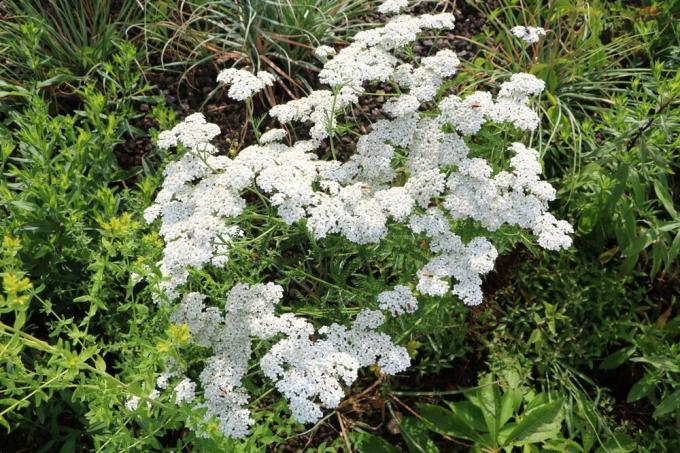

Table of contents
- lavender sachet
- harvesting the flowers
- Put lavender in bags
- Conclusion
Lavender looks interesting, smells good and you can use it for all sorts of things. Although it requires special lavender to produce the oil, it can be grown in the garden and is easy to care for. The flowers can also be dried. The little scented bouquets look beautiful. Blossoms filled in sachets help in the closet against moth infestation and also in the kitchen cupboard against food moths, which can also become a plague. In addition, lavender has healing properties. It has a calming effect and relieves stomach and intestinal problems. Lavender tea helps you fall asleep, lavender flowers in the bath water are pleasant and soothing, lavender flowers in the pillow ensure a peaceful sleep. So the plant is very versatile.
lavender sachet
- Cotton or linen are suitable for the bags. They let air through. This allows the aroma to unfold.
- If you can't sew, you should use a pretty napkin. You can staple these together at the end or better tie them together at the top like a little bag and decorate them with a pretty bow. If necessary, a kitchen towel from a roll will do. Nobody sees the bags in the closet.
- To make a bag, use strips of fabric measuring about 10 x 30 cm.
- The narrow sides must be hemmed so that they do not fray.
- The long sides are placed face down and sewn together.
- A fine stitch is ideal so that none of the small flowers can fall out later.
- The bag is turned inside out so that the nice side is on the outside.
- Now only the filling and a bow are missing.
harvesting the flowers
- The flowers are collected in June and August.
- It is only harvested when the flower has fully opened. In this way, the stems can be dried well together with the flower panicle. Flower color and active ingredients are retained.
- The stems are cut off below the first pair of leaves, tied together and hung to dry, flowers side down.
- Only hang in a dry, airy and dark room!
Put lavender in bags
- The flower spikes are cut into small pieces.
- The stems also smell and are also cut into small pieces.
- Without stems, many flowers are needed.
- Fill in the flowers and close the bag tightly with a narrow ribbon.
- The sachets smell for about two years, but if you can, you should refill it every year.
Conclusion
Lavender sachets are easy to make. They are useful and ideal for gifting. Who doesn't love a homemade gift?
 garden editorial
garden editorial I write about everything that interests me in my garden.
Learn more about medicinal herbs

Celery, Apium graveolens: 14 tips for growing
Celery is often used as a soup vegetable along with other vegetables and herbs. There are several variants of celery, the cultivation of which hardly differs from each other. You can read here what you need to bear in mind.

What is the effect of yarrow? | 9 areas of application
Yarrow is considered by many to be a weed in the garden, but in herbal medicine positive effects on health are attributed to the plant. But what effect should yarrow have and how can the plant be used?

Gotu Kola, Centella asiatica: Care from A – Z
The plant Centella asiatica, also known as Indian pennyroyal or tiger grass, is considered a so-called superfood and is currently very trendy. In Asia it is used under the name Gotu Kola as a medicinal plant that is said to accelerate wound healing and have an antidepressant effect. The tiger grass requires relatively little care and can basically also be grown successfully in this country.

Make comfrey ointment yourself | Instructions for making leaves
Comfrey is a valuable herb whose healing properties were praised by Paracelsus and Hildegard von Bingen. It can be used to make oils, tinctures and ointments. Both the roots and the leaves are suitable for making an ointment.

Process Comfrey | Dry and apply comfrey root
Comfrey, also known as comfrey or comfrey, is a very old medicinal plant that grows in the garden and outdoors in this country. However, the use of comfrey should always be done with care, because the plant also contains harmful substances.

Identify edible wild herbs: list of 20 herbs
Wild herbs can be found everywhere in nature. We don't have to sow them first. No tedious maintenance either. Just harvest and enjoy. Sometimes it's the leaves, sometimes the blossoms or even the roots that give our dishes a special pep.
